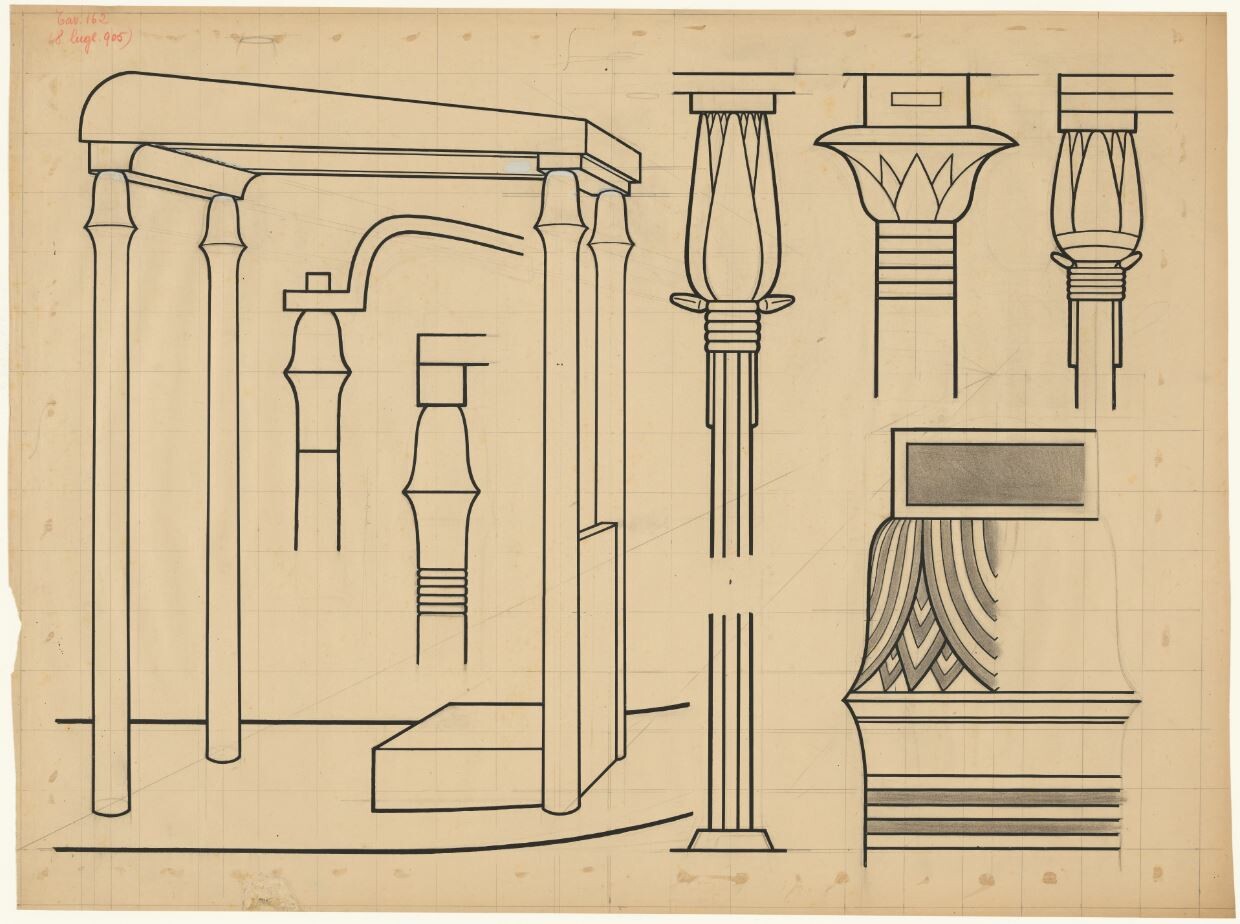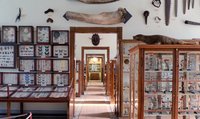Zeichnung zu einem ägyptischen Holzpavillon und der Gestaltung von Kapitellen. Blatt ist die originale Vorstudie zur späteren Ausführung als Lithographie, die als großformatige Wandtafel gedruckt als Lehrmittel an Kunstgewerbeschulen gebraucht wurde. Das Papier wurde zuvor in gleichmäßige Rechtecke und persektivische Achsen mittels Bleistift unterteilt. Die einzelnen Zeichnung sind in Bleistift ausgeführt und teilweise schraffiert, die Konturen in Tusche nachgezogen.
Meurer gab das Blatt wieder in seiner Publikation "Vergleichende Formenlehre des Ornamentes und der Pflanze" von 1909 unter der Abt. XIX., Taf.6. Hier ist vermerkt, dass der französische Ägyptologe Gaston Maspero den Pavillon bei Grabungen in Aphroditopolis, einer antiken Stadt Ägyptens, entdeckt hatte. Ob er mit Meurer persönlich bekannt war, ist unbekannt.
Restauriert 2021 mit Steuermitteln auf der Grundlage des vom Sächsischen Landtages beschlossenen Haushaltes.
en

